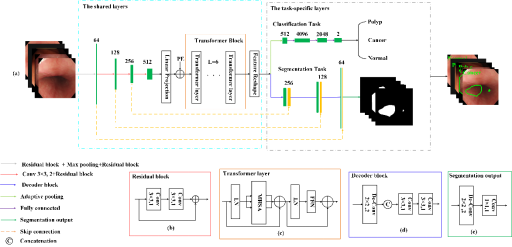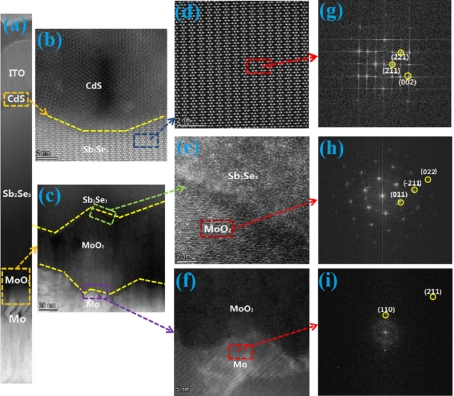学科团队
智能微纳器件与嵌入式系统团队
团队介绍
本团队专注于嵌入式集成电路设计与应用、微纳电子器件研发及AI算法应用研究。
团队负责人
 刘华珠,男,中共党员,太阳集团www0638教授,华南理工大学通信与信息系统专业博士,博士后合作导师,东莞市特色人才。现任东莞市电子信息 技术重点实验室负责人,负责组建过广东省嵌入式智能工业检测工程技术研究中心,联合企业共建了省工程技术研究中心,担任过企业科技特派员(联系企业:生益电子、宜安科技、乐升电子),硕士研究生导师(先后与华南理工大学、深圳大学和广东工业大学联合培养)。主持省项目3项,高校负责人承担省部级重大项目3项;第1发明人获授权发明专利9项、实用新型专利28项,软件著作权11项,发表论文30余篇。作为第1完成人两次获得市科技进步奖。在深圳市中兴集成电路设计有限公司(现为:国民技术股份有限公司)工作期间,作为项目负责人主持完成了两款通信芯片的研制工作,帮助产业解决了被国外芯片卡脖子的问题。
刘华珠,男,中共党员,太阳集团www0638教授,华南理工大学通信与信息系统专业博士,博士后合作导师,东莞市特色人才。现任东莞市电子信息 技术重点实验室负责人,负责组建过广东省嵌入式智能工业检测工程技术研究中心,联合企业共建了省工程技术研究中心,担任过企业科技特派员(联系企业:生益电子、宜安科技、乐升电子),硕士研究生导师(先后与华南理工大学、深圳大学和广东工业大学联合培养)。主持省项目3项,高校负责人承担省部级重大项目3项;第1发明人获授权发明专利9项、实用新型专利28项,软件著作权11项,发表论文30余篇。作为第1完成人两次获得市科技进步奖。在深圳市中兴集成电路设计有限公司(现为:国民技术股份有限公司)工作期间,作为项目负责人主持完成了两款通信芯片的研制工作,帮助产业解决了被国外芯片卡脖子的问题。
团队核心成员

赵晓芳,女,中共党员,太阳集团www0638副教授,华南理工大学电路与系统专业博士,硕士生导师,东莞市三类特色人才。现任东莞市智能工业检测工程技术研究中心主任,担任过企业科技特派员(联系企业:东莞五株电子、生益电子、宜安科技、乐升电子),主持省项目1项,成果转换项目1项,东莞市科技特派员项目1项;第1发明人获授权发明专利4项,近五年具有代表性的SCI论文5篇(其中一篇为集成电路领域顶刊)。作为第2完成人两次获得市科技进步奖。

唐穗谷,男,澳门科技大学计算机技术及其应用博士,太阳集团www0638讲师,长期从事AI算法研究(包括AI智能芯片,医学图像处理及机器学习)。参与澳门科学技术发展基金项目1项,澳门科学技术发展基金-国家自然科学基金联合项目1项;近五年内代表性SCI论文7篇,发明专利2项。

林俊辉,男,广东工业大学半导体器件博士,深圳大学物理与光电工程学院光学工程专业博士后出站,同年在0638太阳集团任讲师。长期从事半导体光伏器件,半导体器件工艺仿真及电子功能材料开发研究。近年来围绕硫系薄膜太阳电池界面接触特性及调控研究,取得了优秀成果。参与国家自然科学基金青年科学基金项目1项,太阳集团www0638人才引进启动项目1项;近五年内代表性SCI论文8篇。为第二发明人的实用新型专利2项(导师为第一发明人)。
科研方向
1. 人工智能
通过细致的探索与分析,发现在模型的编码器或共享层部分利用Transformer与CNN的优势,能够显著增强模型的特征提取能力,从而优化其性能。相关研究成果已在Biomedical Signal Processing and Control及Computers in Biology and Medicine等顶级学术期刊上发表,相关模型结构如图1-2所示。本部分前期研究与本项目的关联点在于:前期研究中的网络设计通过Transformer捕捉全局特征,同时利用卷积神经网络(CNN)精确提取局部特征,这种方式使得模型能够获取到更为丰富且全面的特征信息,进而显著提升了诊断的准确性。这一网络设计思路为本项目的网络架构提供了宝贵的参考和坚实的理论依据。

图1. TransCS-Net网络结构.

![]()
图2. TransMT-Net网络结构.
2. 电子器件
采用Mo基底在空气中退火得到MoO2调控层。然后采用磁控溅射及后硒化方法制备得到Sb2Se3光吸收层,从图3的结果可知,MoO2界面调控层可有效提高器件光电转换效率5.5%至8.14 %, 降低背接触势垒。另外,我们采用XPS和UPS分别获得有MoO2层的电池器件与无MoO2层电池器件的背界面接触势垒,发现MoO2界面调控层可降低背接触势垒,这说明MoO2层可降低光生载流子在背界面处的复合。从图4的结果,具有MoO2层的Sb2Se3器件的剖面TEM图可以观察到Sb2Se3/CdS界面晶格匹配情况,结果证明MoO2层也相应改善Sb2Se3/CdS异质结界面晶格匹配度。在图5的器件物理参数表征的结果中,MoO2层可减少Sb2Se3/CdS界面的缺陷浓度,增强内建电势,减少Sb2Se3薄膜的体缺陷浓度。

图3有MoO2界面调控层与无MoO2界面调控层Sb2Se3器件的J-V、背接触势垒及器件背界面能带分布

图4 有MoO2界面调控层Sb2Se3器件的剖面TEM图

图5 有MoO2界面调控层与无MoO2界面调控层Sb2Se3器件的CV,DLCP及导纳谱
代表成果
[1] S. Tang, X. Yu, C.F. Cheang, Y. Liang, P. Zhao, H.H. Yu, and I.C. Choi, “Transformer-based multi-task learning for classification and segmentation of gastrointestinal tract endoscopic images,” Computers in Biology and Medicine, vol. 157, pp. 106723, 2023.
[2] S. Tang, C.F. Cheang, X. Yu, Y. Liang, Q. Feng, and Z. Chen, “TransCS-Net: a hybrid transformer-based privacy-protecting network using compressed sensing for medical image segmentation,” Biomedical Signal Processing and Control, vol. 86, pp. 105131, 2023.
[3] S. Tang, and Z. Deng, “CS-based multi-task learning network for arrhythmia reconstruction and classification using ECG signals,” Physiological Measurement, vol. 44, no. 7, pp. 075001, 2023.
[4] S. Tang, X. Yu, C.F. Cheang, X. Ji, H.H. Yu, and I.C. Choi, “CLELNet: a continual learning network for esophageal lesion analysis on endoscopic images,” Computer Methods and Programs in Biomedicine, vol. 231, pp. 107399, 2023.
[5] P. Zhao, H. Zheng, S. Tang, Z. Chen, and Y. Liang, “DAMNet: a dual adjacent indexing and multi-deraining network for real-time image deraining,” Fractal and Fractional, vol, 7, no. 1, pp. 24, 2022.
[6] S. Tang, X. Yu, C.F. Cheang, Z. Hu, T. Fang, I.C. Choi, and H.H. Yu, “Diagnosis of esophageal lesions by multi-classification and segmentation using an improved multi-task deep learning model”, Sensors, vol. 22, no. 4, pp. 1492, 2022.
[7] X. Yu, S. Tang, C.F. Cheang, H.H. Yu, and I.C. Choi, “Multi-task model for esophageal lesion analysis using endoscopic images: classification with image retrieval and segmentation with attention”, Sensors, vol. 22, no. 1, pp. 283, 2021
[8] Junhui Lin, Ayyaz Mahmood, Guojie Chen, Nafees Ahmad, Mingdong Chen, Ping Fang, Shuo Chen, Rong Tang and Guangxing Liang. Crystallographic orientation control and defect passivation for high-efficient antimony selenide thin-film solar cells [J]. Materials Today Physics, 2022, 27: 100772.
[9] Junhui Lin, Guojie Chen, Nafees Ahmad, Muhammad Ishaq, Shuo Chen, ZhengHua Su, Ping Fan, XiangHua Zhang, GuangXing Liang. Back Contact Interfacial Modification Mechanism in Highly-Efficient Antimony Selenide Thin-Film Solar Cells [J]. Journal of Energy Chemistry,2023, 80: 256-264.
[10] Junhui Lin, Jiaxiong Xu, Yuanzheng Yang. Study of interface properties between Cu2ZnSnS4 thin films and metal substrates [J]. Ceramics International, 2020, 46: 218-226.
[11] Junhui Lin, Jiaxiong Xu, Yuanzheng Yang. Effect of sulfur powder mass on the formation of MoS2 interface layer between Cu2ZnSnS4 thin film and Mo foil [J]. Superlattices and Microstructures, 2020, 147: 106724.
[12] Junhui Lin, Jiaxiong Xu, Yuanzheng Yang. Numerical analysis of the effect of MoS2 interface layers on copper-zinc-tin-sulfur thin film solar cells [J]. Optik, 2020, 201: 163496.
[13] Junhui Lin, Xiaoshuai Wu, Jiaxiong Xu, Yuanzheng Yang, Inhibiting the formation of MoS2 between Cu2ZnSnS4 thin film and Mo (211) foil substrate by inserting a Mo(110) intermediate layer[J]. Optical Materials, 2022, 124: 111996.
[14] Jiaxiong Xu, Junhui Lin, Chunan Zhuang. Analysis of the open-circuit voltage of Cu2ZnSn(S,Se)4 thin film solar cell [J]. Solar Energy, 2018, 164: 231-242. (导师一作,本人二作)
[15] Liu Hua-Zhu , Luo Shi-Yu, Shao Ming-Zhu ,Small amplitude approximation and stabilities for dislocation motion in a superlattice, Chinese Physics B,2013.4, Vol.22,No.4,(2013)047807.SCI:000317123600088. (SCI/EI,IF:2.103)
[16] Lin Sheng-Xin, Zhao Xiao-Fang, Liu Hua-Zhu,Vision-based fast location of multi-bar code in any direction,Modern Physics Letters B,2017.7,SCI
[17] Guobin Zhang, Huazhu Liu, Ke Lin, Feng Ke,Terminal density dependent resource management in cognitive heterogeneous networks,Wireless Netw, Springer Science+Business Media New York 2016, DOI 10.1007/s11276-016-1235-x, SCI.
[18] Gaoqiang Niu, Changhui Zhao, Huimin Gong, Zhitao Yang, Xiaohui Leng, and Fei Wang*, “NiO Nanoparticle-Decorated SnO2 Nanosheets for Ethanol Sensing with Enhanced Moisture Resistance”,Microsystems & Nanoengineering, 2019;
[19] Gaoqiang Niu, Mingxiang Zhang, Bo Wu, Yi Zhuang, Rajendran Ramachandran, Changhui Zhao, Fei Wang, “Nanocomposites of pre-oxidized Ti3C2Tx MXene and SnO2 nanosheets for highly sensitive and stable formaldehyde gas sensor,” Ceramics International, 2022.
[20] Gaoqiang Niu and Fei Wang*, " A review of MEMS-based metal oxide semiconductors gas sensor in Mainland China," J. Micromech. Microeng. 2022.
[21] Gaoqiang Niu, Lingxiang He, Zhitao Yang, Changhui Zhao, Huimin Gong, Wei He and Fei Wang*, “A micro-hotplate for MEMS based gas sensor,” in International Conference on Electronic Packaging Technology (ICEPT 2018), Oral Presentation, Shanghai, 2018.
[22] Gaoqiang Niu, Huiming Gong, Changhui Zhao and Fei Wang*, “H2S sensor based on MEMS hotplate and on-chip growth of CuO-SnO2 nanosheets for high response, fast recovery and low power consumption”, MEMS2020, 2020;
[23] Gaoqiang Niu, Changhui. Zhao and Fei Wang*, “Scalable Synthesis of SnO2 Nanosheet Arrays on Chips for Ultralow Concentration NO2 Detection,” 2021 IEEE 16th International Conference on Nano/Micro Engineered and Molecular Systems (NEMS), 2021, pp. 820-823, doi: 10.1109/NEMS51815.2021.9451385.

 EN
EN


